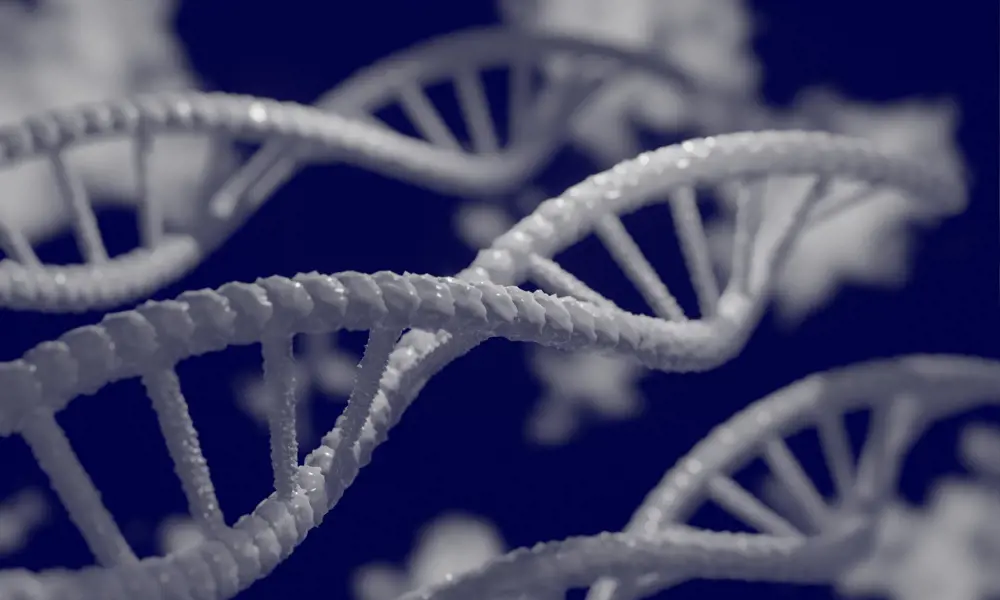
How lab-on-a-chip tech brought rapid genetic testing to the public
In a nutshell
- An interdisciplinary team has created a simple swab test that analyses individuals’ genetic profiles
- The test maps people’s unique DNA and nudges them towards healthier food shopping choices
- It has now been adapted to accurately detect the SARS-CoV-2 virus from saliva samples on-site in just over an hour
If it hadn’t been for a family health crisis, Professor Christofer Toumazou’s career may not have gone in the direction that has now won his team the Royal Academy of Engineering’s MacRobert Award – the longestrunning award for engineering innovation in the UK. In 2021, DnaNudge, created by biomedical Professor Toumazou and geneticist Dr Maria Karvela – CEO and CSO respectively of the London-based startup – won the award for its pioneering genetic testing technology, which has pivoted and was adapted into a rapid, lab-free RT-PCR test for COVID-19 in NHS hospitals.
Having working in electronics for telecommunications, Professor Toumazou embarked on this new path because both he and his wife had inherited a single copy of the same faulty gene, which in 2007 caused their son, Marcus, to develop severe kidney disease. After Marcus suffered organ failure, the Toumazou family spent a great deal of time in London’s Great Ormond Street Hospital for Sick Children, where Professor Toumazou realised that healthcare related to genetic conditions focused too much on treating the effects of disease rather than preventing its worst effects from developing.
“Had we known that Marcus had inherited this condition there were things that we and the health system could have done earlier,” Professor Toumazou explains. “That could have avoided the side-effects he experienced because we didn’t know early enough. I witnessed first-hand how primitive chronic disease management was in a home setting. Hospitals often find it difficult to bring in preventative technologies because it means additional cost to the healthcare system. Although it would be cheaper in the long run and better for patients, it is set up to treat disease rather than to prevent it.”
Lab-on-a-chip
Professor Toumazou started thinking about whether his skills in miniaturising complex technology could help develop equipment to carry out genetic testing to detect genes that could potentially have a serious effect on people’s future health. “We had invested billions of dollars into consumer-friendly technologies in the telecoms area, but we’ve invested very little into consumer health and in using technologies in a way that can help consumers look after their own health.”
The lab-on-a-chip concept was then in its infancy, but Professor Toumazou realised that it could have potential for this kind of application; with his knowledge of design and fabrication of silicon wafers he could be well placed to develop it. While his background was in electronics and semiconductors, he had little knowledge of microfluidics – the branch of fluid dynamics concerned with liquid flow through very small channels – and hardly any knowledge of genetics. Fortunately, only a few years earlier the Human Genome Project, the international research effort to determine the DNA sequence of the entire human genome, had issued its first report, so characterising human genes and finding practical uses for the information was of great interest.
The idea required interdisciplinary working for development. Sir Richard Sykes FRS FMedSci HonFREng, former Chair and Chief Executive of GlaxoSmithKline, had recently been appointed rector of Imperial College London and was keen on interdisciplinary research, which was more commonplace in the pharmaceutical industry and had proved extremely fruitful. “With his backing, I created an Institute of Biomedical Engineering where medics, engineers, biochemists, electrical engineers, and physicists all worked together,” says Professor Toumazou. “That interdisciplinarity and collaboration allowed us to develop the complete lab-on-a-chip technology.”
The lab-on-a-chip developed from a need to decide whether to attack the problem by sequencing or by detection. Sequencing required analysing large stretches of the patient’s genome, a lengthy process needing a lot of processing power. “Sequencing is a very good medical technology that we now value so much today, for example in discovering the SARS-CoV-2 virus’s genes, but my heart was more in detection than sequencing,” Professor Toumazou says. “I thought that if we could detect genes with mutations that made people vulnerable to avoidable health conditions, we would have a powerful tool.”
We had invested billions of dollars into consumer-friendly technologies in the telecoms area, but we’ve invested very little into consumer health and in using technologies in a way that can help consumers look after their own health.
Professor Christofer Toumazou, CEO of DnaNudge
Fishing for SNPs
This detection approach led DnaNudge’s newly established team to develop a chip similar to devices used to identify active ingredients to target specific receptors on cells. The chip contains a micro-array of 72 tiny wells, each containing a chemical reagent that binds to a genetic sequence of interest. The sequences are known as single-nucleotide polymorphisms (SNPs), conveniently pronounced ‘snips’.
“Think of the SNP reagents as being like fishing bait that only catch one species of fish,” Professor Toumazou explains. “We decided that the first health conditions we would target were obesity, hypertension and type 2 diabetes, which are huge public health issues putting a strain on the NHS. The genetic mutations – the SNPs – that leave people vulnerable to them are well known, so we baited some of the wells with reagents to detect those SNPs. Although you can collect saliva samples easily, you then have to extract the DNA and make sure there is enough for the reagents to detect the SNP you are looking for.”
The chip plugs into a palmsized circular cartridge, which is then inserted into a ‘NudgeBox’ – an appliance a little smaller than a shoebox that contains sensors and heating elements. Lab technicians normally extract DNA by pipetting samples into a machine that uses chemical steps to purify the genetic material. Over two to three years, DnaNudge worked with Cambridge-based The Technology Partnership (TTP) to develop a system where every step required for extraction and purification takes place inside the cartridge. “That’s the key to decentralisation,” Professor Toumazou adds, “allowing unskilled workers to run this with no need for chemistry degrees or understanding of medical devices.”
The cartridge has a micro motor in its base – powered by the NudgeBox – that operates miniaturised equipment to extract a sample from a swab and then extracts DNA from the sample, which is minute. Professor Toumazou explains: “Think of DNA molecules as very small ‘fish’ and as before, the SNP reagents as ‘bait’, spotted in each well. Each ‘bait’ will bind to its specific target ‘fish’. However, to detect this ‘fish–bait’ interaction, we need a large number of fish hooked on their unique baits. We use the polymerase chain reaction (PCR) to do that. When DNA is heated, the two strands separate. You can then add some short, single strands of synthetic DNA, which bind to the target strand when it cools. Then, the polymerase attaches to the ‘fish–bait’ construct and adds on other individual building blocks of DNA (called free nucleotides) to make a whole new double strand. If you repeat this heating–cooling–addition cycle many times you get more copies of the target DNA. The NudgeBox contains all the heating and cooling hardware needed to do this. In less than an hour it extracts the DNA and performs enough PCR cycles to detect the presence of the target sequences. When the target DNA sequences are present in the sample, fluorescence is released proportionate to the number of copies of target DNA. This fluorescence is then detected by the NudgeBox, and a profile in the array of wells is created. The first thing it does is encrypt it so we can throw away the cartridge; we don’t keep DNA information.”
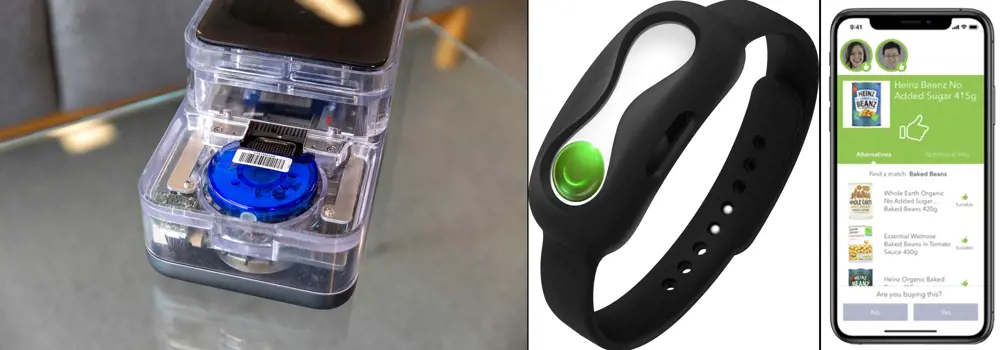
Once the NudgeBox has mapped the user’s genetic profile to key nutrition-related health traits, they can use the wrist-worn DnaBand or the mobile app to scan food products sold in UK supermarkets to find out whether the nutritional contents are a good match for their individual biology
DnaNudge used the national guidelines for nutrition published by the Chief Medical Officer’s office and ensured that these were integrated into the app. The software, hosted on a mobile phone, allows consumers to check their SNP profile against foods’ nutritional information using a small wireless barcode scanner to get an instant read out showing whether a particular item is good or bad for them. For example, people with a predisposition to type 2 diabetes must reduce saturated fat and sugar in their diets, while those with a predisposition to hypertension must reduce salt. “It won’t say ‘you should eat a banana instead of a biscuit’, because we know that kind of advice doesn’t work,” says Professor Toumazou. “What it does say is that these biscuits would be better for you than those others. That’s what we mean by the ‘nudge’.” Professor Toumazou is himself predisposed to hypertension, and by using the system discovered that dry-roasted peanuts are worse for him than standard salted peanuts because of higher salt content in the flavoured coating.
Adapting to COVID
The technology was launched commercially in November 2019. DnaNudge partnered with Waitrose to attract customers and opened a shop in London’s Covent Garden to provide the service, adding a series of tests to determine which active ingredients in skincare products were most likely to benefit the customer. “To launch the service, we needed show people that with just small changes they could see definite results. Healthcare and appearance are both appealing things for people to latch onto: in a way, we were appealing to people’s vanity to get this off the ground,” adds Professor Toumazou.
In January 2020, DnaNudge took its technology to the Consumer Electronics Show in Las Vegas, where it attracted interest from US health retailers. However, cases of COVID-19 were already rising dramatically in China, and just weeks after the team’s return from the US, the UK also locked down. The government started to ask industry for ways to help tackle the pandemic. With the genetic sequence of the SARS-Cov-2 virus quickly determined, Professor Toumazou instantly realised that DnaNudge’s technology could be useful: instead of detecting SNPs in human DNA, it could detect the virus. “I had deliberately tried to avoid the ‘real’ medical area, but this threw me straight into it,” he explains. “I had discussions with the Department of Health and Social Care, and we agreed we would do this at cost”.

Alongside its use in NHS hospitals, the test is being in used in care homes across the UK. The test also has multiplex capabilities and can check for FluA, FluB and respiratory syncytial virus in addition to COVID-19 © thisisjude.uk 2020
The first issue was that the virus contains RNA (ribonucleic acid) rather than DNA, and only DNA can be amplified by PCR. The DnaNudge team developed a technique using reverse transcription PCR to convert RNA to DNA, using a combination of freeze-dried reagents. However, this wasn’t very stable and sometimes didn’t work, so the team needed to find a way to heat the RNA as well – in less than a month. Having 72 wells available on the analysis chip allows DnaNudge to include all the viral variants of interest as soon as their genetic sequence is available and allows for a primed well to detect human DNA in the saliva sample from a patient. When a swab is taken, it often doesn’t pick up any genetic material at all, which means it can show as a false negative on a COVID- 19 test. “Our system includes a control, to check that there is human DNA in the sample – and therefore the swab has been effective – so if COVID-19 isn’t detected, you know it’s a true negative,” says Professor Toumazou. “This tackled a huge problem, as 20% of tests in hospitals were returning false negatives. We did a huge validation in London and Oxford hospitals to satisfy the MHRA [Medicines and Healthcare products Regulatory Agency] and then published a paper in The Lancet Microbe showing 96% to 97% sensitivity and 100% specificity, meaning we didn’t miss any positives.”
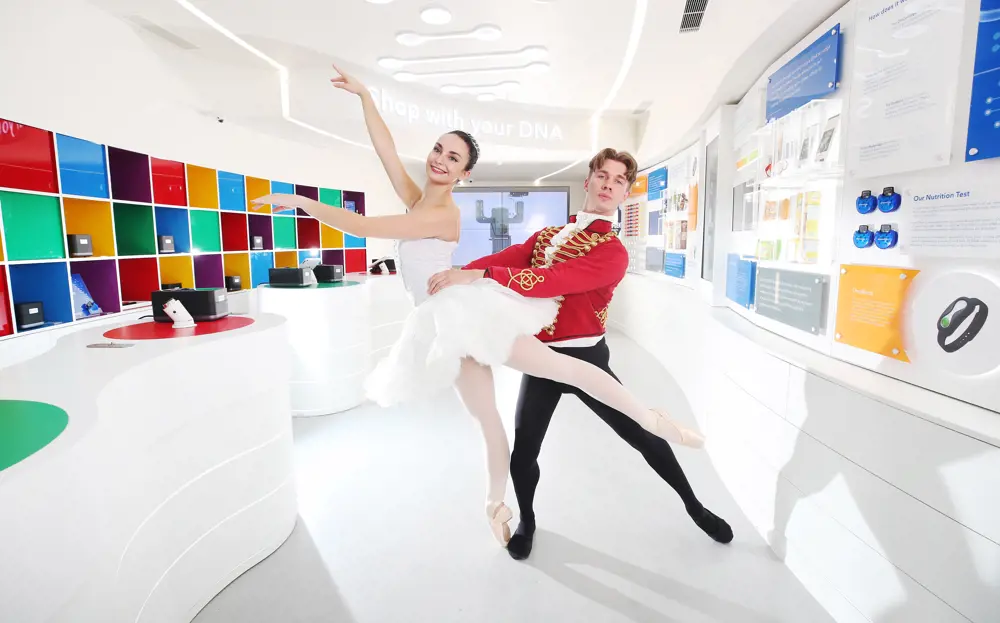
Without a laboratory or any manual steps involved, the ‘lab-in-cartridge’ technology can return results in just over an hour. This rapidity has proved popular in the arts and culture sector, with institutions including London Symphony Orchestra, Glyndebourne Festival and the Royal Opera House – home of the Royal Ballet – all using the tests to support safe rehearsals and performances
The major engineering problem for the project revolved around the manufacturability of the cartridge. Switching from consumer testing to COVID-19 testing required a large scaleup of production. DnaNudge partnered with a contract manufacturing company Jabil, which makes Hewlett-Packard printer cartridges in Ireland, to manufacture the cartridges. Inkjet printer cartridges have some mechanical similarities with the test cartridges – both depend on precise handling of small amounts of liquid and must be plugged into another box to interface with separate mechanisms. “They helped us understand what they needed, and we helped them with material choice, which machines to use, what quality control was necessary,” says Professor Toumazou. “It was a challenging process that otherwise could have taken years.”
Although challenging, Professor Toumazou believes that the engineering effort that went into adapting his system to detect COVID-19 may have been a blessing in disguise for future diagnostic applications. He thinks that the technology’s most valuable use will be in helping doctors to determine which medicines are likely to be the most effective for patients, enabling them to prescribe and dose based on patients’ metabolism of particular drugs and addressing antibiotic resistance. “Lots of bacteria have resistant genes that must be treated with the right antibiotics,” adds Professor Toumazou. “The current tests take far too long; while doctors are waiting for results their patients will be on ineffective drugs. This is known as personalised or precision medicine, and there is resistance from pharmaceutical companies as it might impact sales of some of their blockbuster antibiotic drugs. But I hope things are changing. I’m going back to the concept of one chip, one drug.”
Contributors
Professor Christofer Toumazou FREng FRS FMedSci is DnaNudge’s CEO, and Regius Professor of Engineering, Chair in Biomedical Circuit Design, Director of the Centre for Bio-Inspired Technology, and Founder and Chief Scientist for the Institute of Biomedical Engineering at Imperial College London. He is also Co-Founder and Executive Chair of DNA Electronics. In 1994, Professor Toumazou was the youngest Professor ever to be appointed at Imperial College London, at the age of 33.
Stuart Nathan
Author
Keep up-to-date with Ingenia for free
SubscribeRelated content
Health & medical

A gamechanger in retinal scanning
2006 MacRobert Award winner Optos rapidly became a leading medical technology company and its scanners have taken millions of retinal images worldwide. There is even a display at the Science Museum featuring the Optos development. Alastair Atkinson, of the award-winning team, describes the personal tragedy that was the trigger for the creation of Optos.
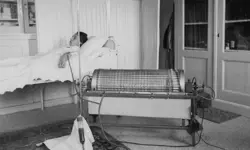
Kidney dialysis
Small haemodialysis machines have been developed that will allow more people to treat themselves at home. The SC+ system that has been developed is lighter, smaller and easier to use than existing machines.

Engineering polymath wins major award
The 2015 Queen Elizabeth Prize for Engineering has been awarded to the ground-breaking chemical engineer Dr Robert Langer FREng for his revolutionary advances and leadership in engineering at the interface between chemistry and medicine.
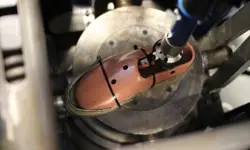
Blast mitigation and injury treatment
The Royal British Legion Centre for Blast Injury Studies is a world-renowned research facility based at Imperial College London. Its director, Professor Anthony Bull FREng, explains how a multidisciplinary team is helping protect, treat and rehabilitate people who are exposed to explosive forces.
Other content from Ingenia
Quick read

- Environment & sustainability
- Opinion
A young engineer’s perspective on the good, the bad and the ugly of COP27

- Environment & sustainability
- Issue 95
How do we pay for net zero technologies?
Quick read

- Transport
- Mechanical
- How I got here
Electrifying trains and STEMAZING outreach

- Civil & structural
- Environment & sustainability
- Issue 95